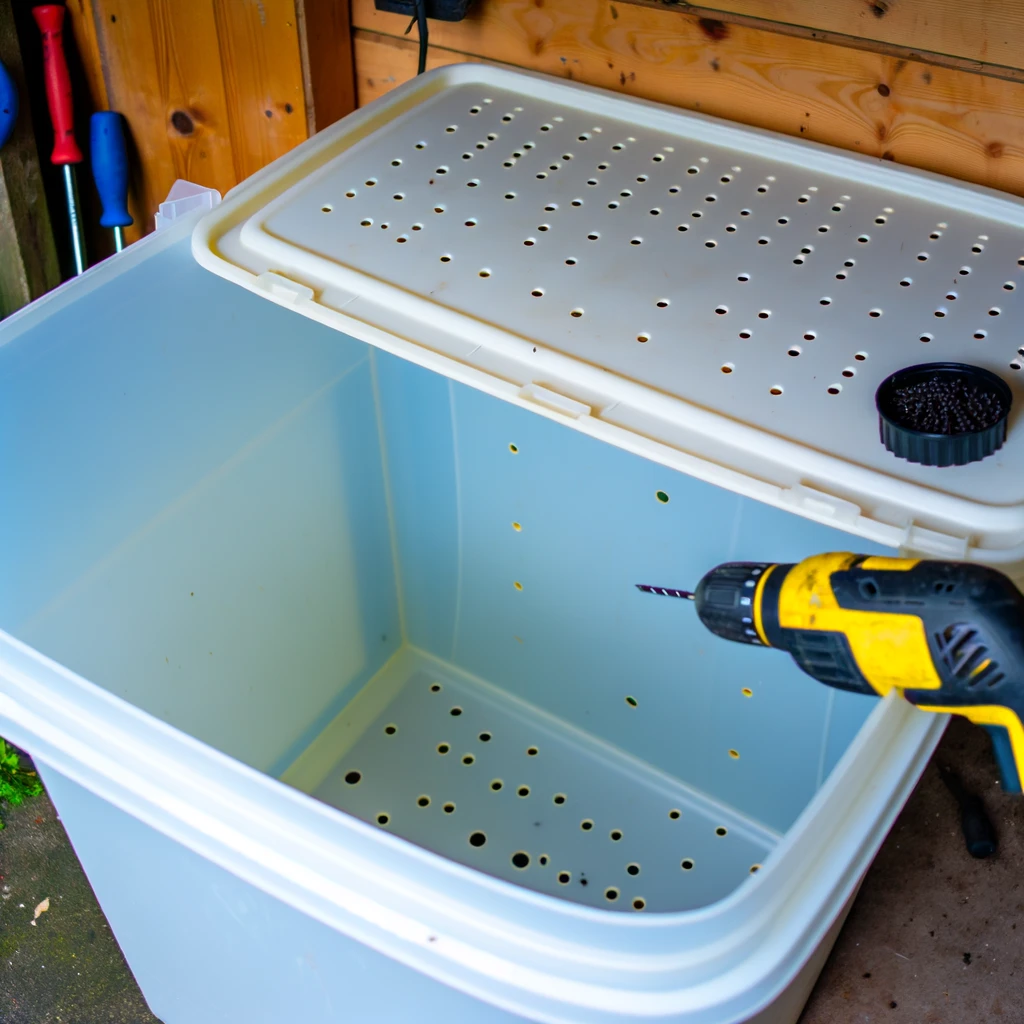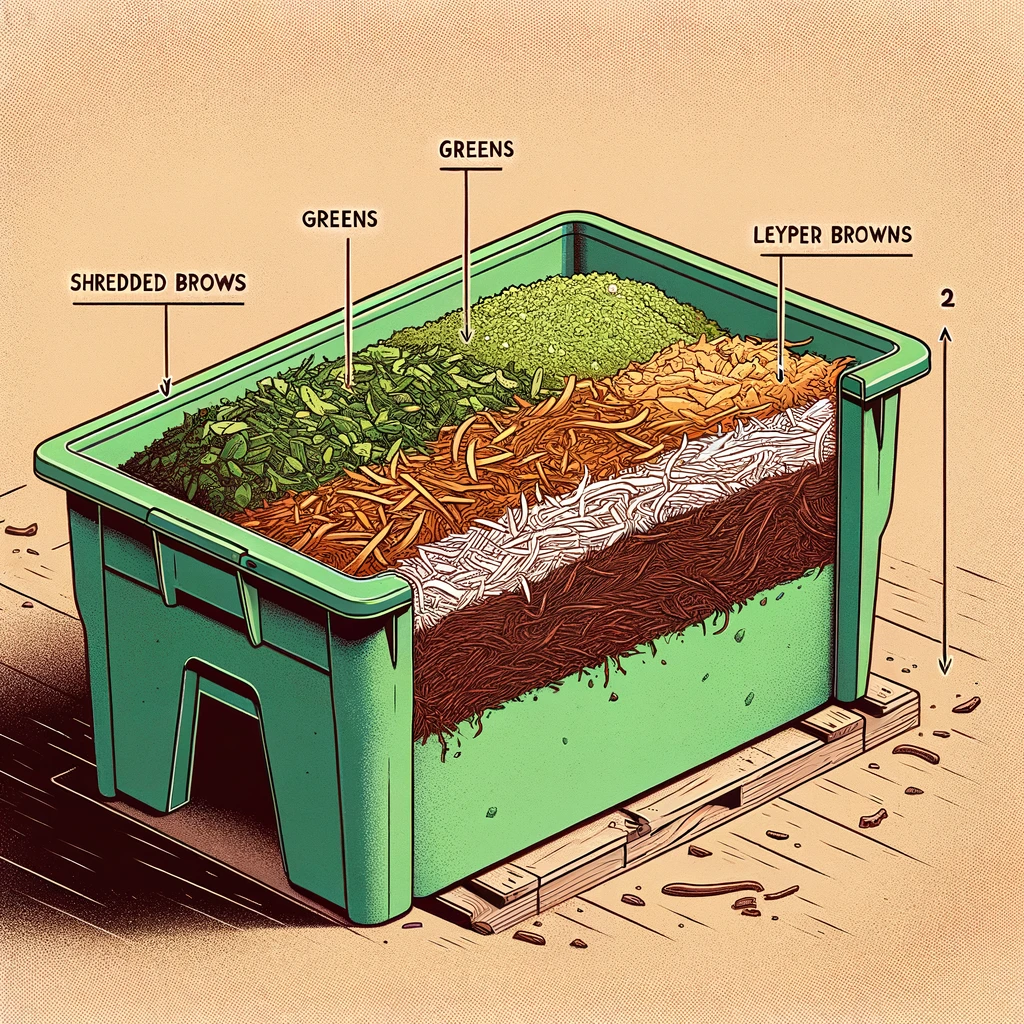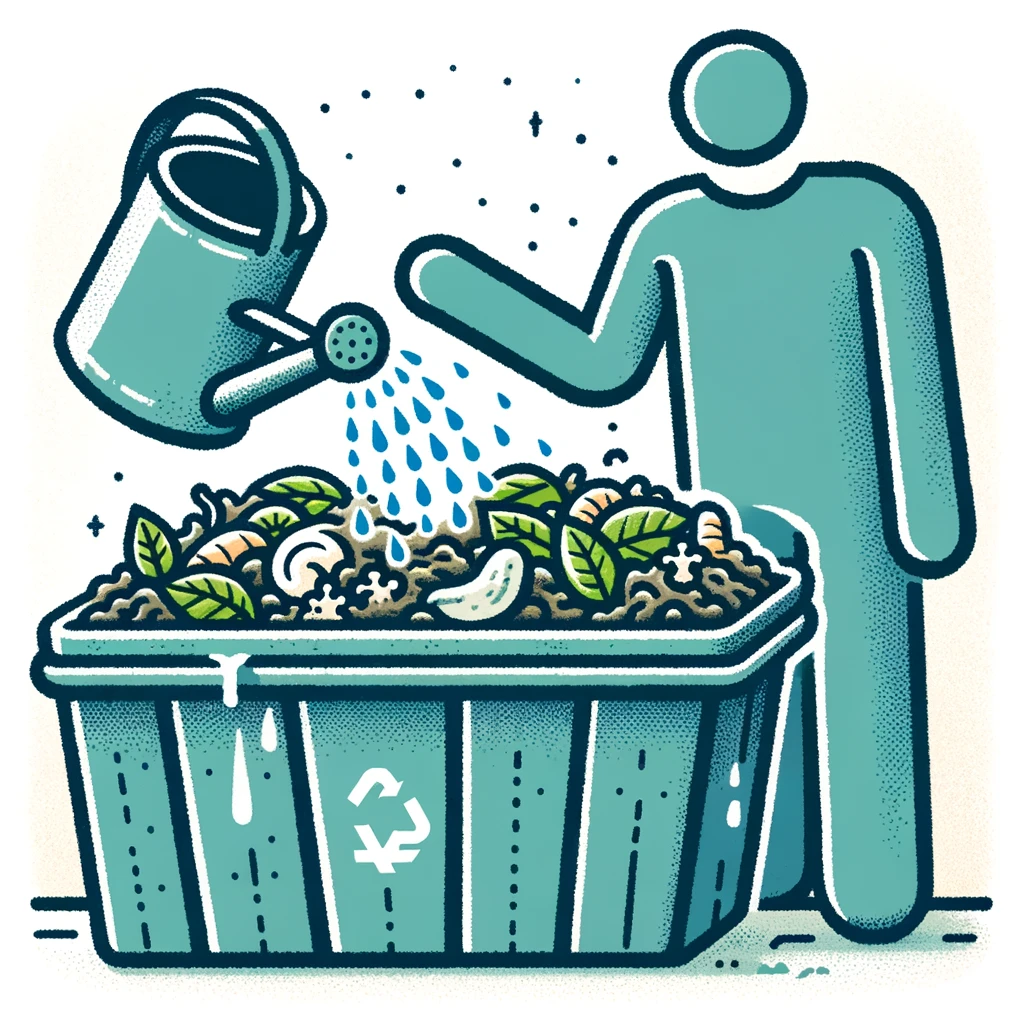Building a DIY garden composter is a fantastic way to recycle kitchen scraps and yard waste into rich, organic compost for your garden. Here’s a step-by-step guide to creating a simple and effective composting bin:
Materials Needed:
- Storage Bin: A large plastic storage bin (about 18-30 gallons) works well for small to medium gardens.
- Drill: For making holes in the bin.
- Wire Mesh or Hardware Cloth (optional): To prevent rodents from getting into the bin.
- Shredded Browns: Such as leaves, straw, or shredded newspaper.
- Greens: Kitchen scraps like vegetable peels, fruit waste, coffee grounds, and eggshells.
- Water
- A Shovel or Garden Fork: For turning the compost.
Step 1: Prepare the Bin
- Take the plastic storage bin and drill holes throughout it. Include the lid, bottom, and sides of the bin. These holes are crucial for aeration and drainage. Aim for holes about 1-2 inches apart.
- If you’re concerned about rodents, cut a piece of wire mesh or hardware cloth to fit the bottom of the bin. Secure it inside the bin, covering the bottom holes. This will allow drainage and air flow while keeping pests out.
Step 2: Location
- Choose a shady spot for your compost bin, as direct sunlight can dry out the compost. It should also be somewhere easily accessible for adding materials and turning the compost.
Step 3: Add Browns and Greens
- Start by adding a layer of shredded browns at the bottom of the bin. This layer should be a few inches thick.
- Add a layer of greens on top of the browns. Try to maintain a ratio of about 3 parts browns to 1 part greens by volume. This ratio helps maintain the right carbon to nitrogen balance for effective composting.
Step 4: Maintain Moisture
- The compost should be as moist as a wrung-out sponge. If it’s too dry, add water until it reaches the desired moisture level.
Step 5: Turn the Compost
- Every week or two, use a shovel or garden fork to turn the compost. This helps to aerate the pile and speeds up the composting process. Move the material from the edges of the bin to the center.
Tips:
- Avoid adding meat, dairy, or oily foods to your compost, as these can attract pests and create odors.
- Chop or shred your materials to speed up the composting process.
- Keep the compost covered with a lid to retain moisture and prevent animals from getting in.
Creating your own garden composter is a rewarding project that benefits your garden and the environment. Happy composting!
Spread the love for sustainable living!


